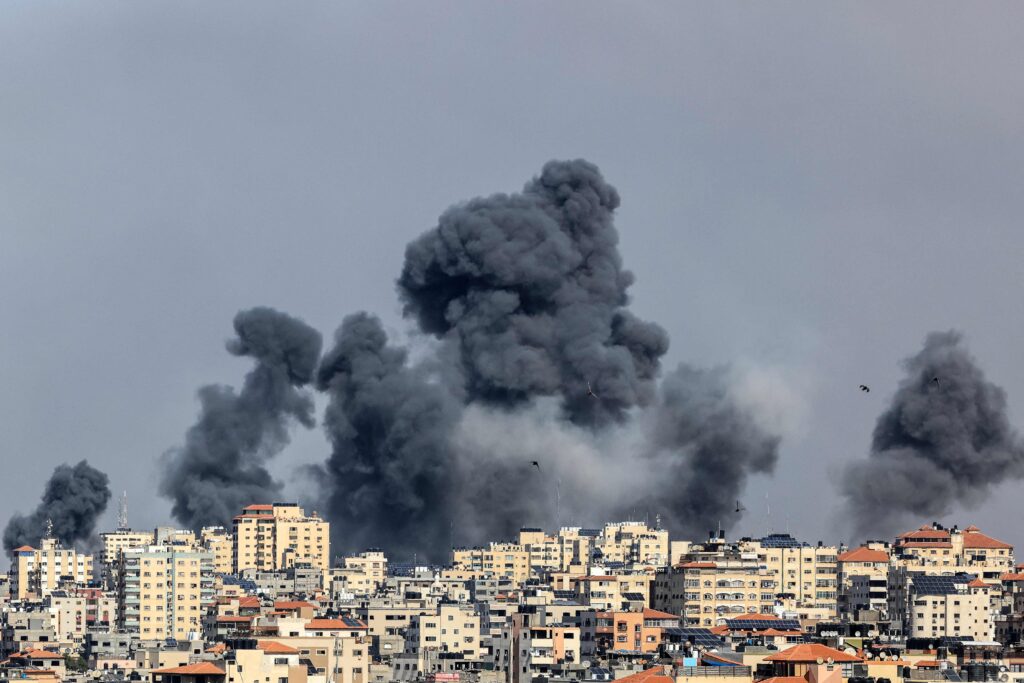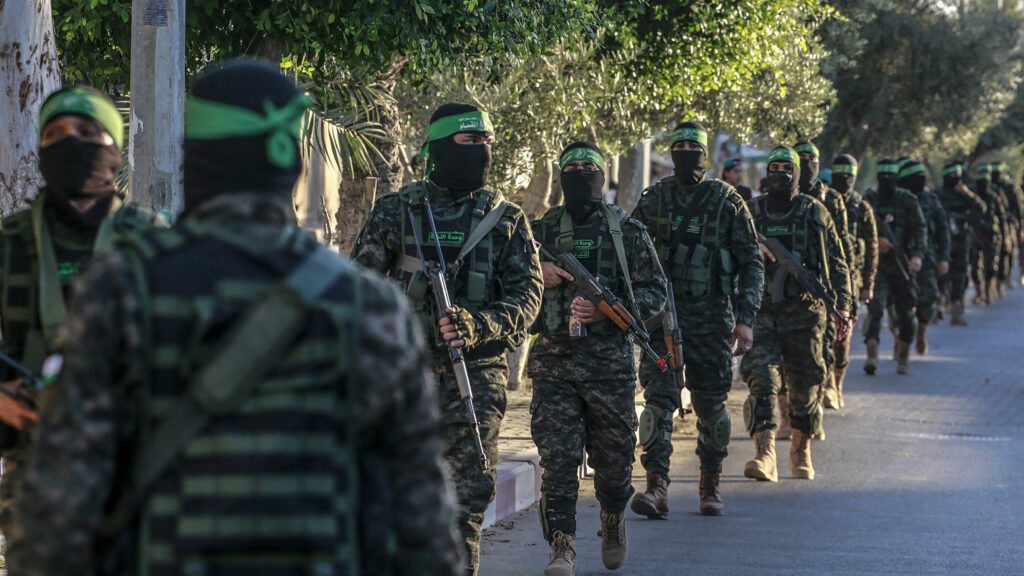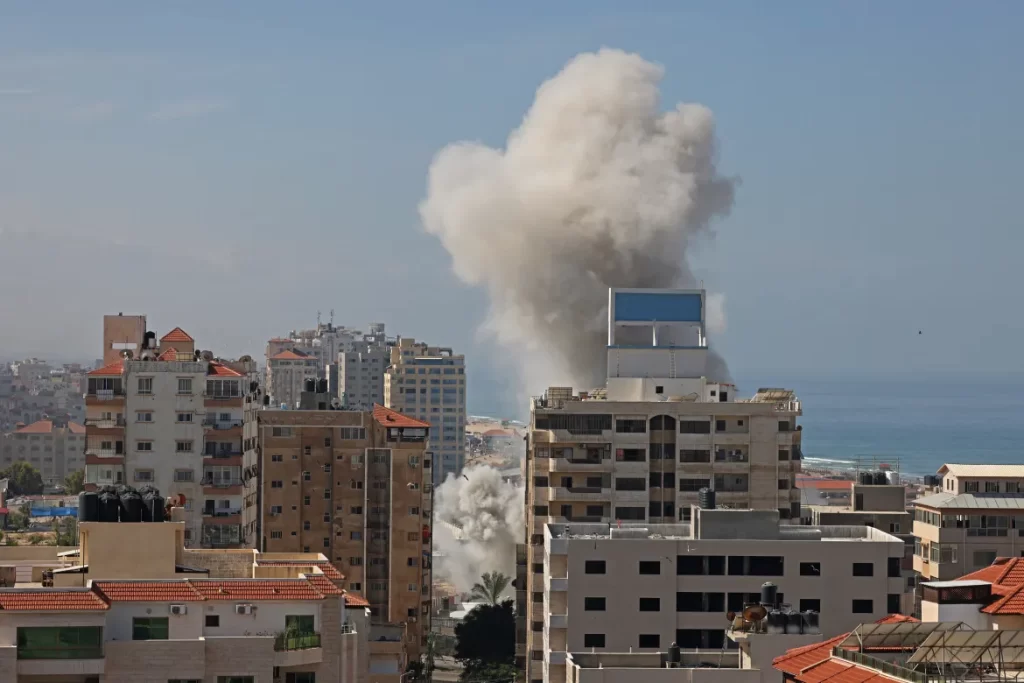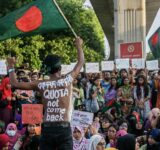On October 7, 2023, the world was stunned as Hamas launched a staggering 4400 missiles into Israel’s territory, marking a significant escalation in the Israel-Hamas conflict. This act wasn’t just a nightmare for Israeli civilians but also for Palestinians, who now face the dire consequences of this assault and the potential ramifications for the Middle East’s future.
The longstanding conflict between the Israeli armed forces and the Palestinians in the Gaza Strip is no secret. However, this recent attack on Israel stands out due to its sheer magnitude and the devastating number of Israeli casualties. In response, the Israeli military has retaliated with unmatched intensity. As the situation unfolds, nations worldwide are picking sides, with the US deploying two aircraft carriers in a bid to contain the conflict.
The region’s tension is palpable, with anti-Israeli protests surging in numbers. To truly grasp the depth and complexity of this conflict, it’s crucial to trace its roots, understand the present dynamics, and anticipate the potential outcomes for the future.

History of the Conflict between Israel and Palestine
Before 1917, the vast territories of Palestine were under the dominion of the Ottoman Empire, which is present-day Turkey. However, the aftermath of World War I saw the fall of the Ottoman Empire, paving the way for British governance over Palestine it marked the beginning of significant Jewish immigration to Palestine encouraged by the British empire.
The Ideology of Zionism
The concept of “Zionism” emerged between 1885 and 1890. This term, coined by Austrian Jewish journalist Nathan Birnbaum, encapsulated the movement’s aspiration to establish a Jewish homeland in the sacred land of Palestine. This ideology gained significant momentum on November 2, 1917, when Arthur Belfour, the then British Foreign Secretary, penned a 67-word letter to Lionel Walter Rothschild, a prominent banker and representative of the British Jewish community. This letter, known as the Balfour Declaration, underscored the British government’s commitment to the creation of a “national home for the Jewish people” in Palestine. This declaration was a pivotal moment, not only altering the trajectory of Palestine but also shaping the future of the Middle East and its inhabitants by legitimizing the ideology of Zionism.
Migration of Jews
With the British government’s support, the period from 1923 to 1948 witnessed a surge in Jewish migration to Palestine. Many of these migrants were fleeing the horrors of Nazism. As the demographic landscape of Palestine began to shift, tensions between the Palestinians and the British escalated. The conflict manifested in various forms, from village bombings and widespread killings to the burning of houses.

2 State Policy
In a bid to address the growing unrest, the United Nations proposed a partition plan in 1947. According to this plan, an Arab state would encompass 42% of Palestine, a Jewish state would receive 55% of the land, and Jerusalem would remain under international jurisdiction. It’s worth noting that at that time, Jewish individuals constituted only 33% of the total population.
The situation took a dark turn on April 9, 1948, when Zionist forces orchestrated a massacre in the village of Deir Yassin, resulting in the death of over 110 individuals. This tragic event marked the onset of a comprehensive cleansing operation by the Zionist army. Between 1947 and 1949, the conflict claimed the lives of more than 15,000 Palestinians, forcing hundreds of thousands to abandon their homes. By the end of this period, the Zionists had successfully seized almost 80% of Palestinian territory.
The Yom Kippur War
The geopolitical landscape further evolved when Egypt assumed control of the Gaza Strip, and Jordan began its administration of the West Bank in 1950. However, the tides turned in 1967 when Israel triumphed over Egypt, Jordan, and Syria, subsequently gaining control over the entirety of Palestinian territory, including areas previously governed by Arabs. The year 1973 saw Egypt and Syria launch a significant offensive against Israel on Yom Kippur Day(Known as the day of atonement, the holiest day in Judaism). Despite facing numerous challenges, Israel emerged victorious, albeit with a considerable number of casualties.
The period between 1993 and 1995 marked a significant diplomatic effort as Israel and the Palestine Liberation Organization (PLO) engaged in negotiations, culminating in the Oslo Accords. These accords envisioned a two-state solution and led to the establishment of the Palestinian Authority, responsible for governing specific West Bank and Gaza Strip regions.

How Hamas was Created
The Muslim Brotherhood, a prominent movement that emerged in Egypt in the early 20th century, played a pivotal role in shaping the ideology of Hamas. This influence became particularly evident during the first Intifada, a Palestinian uprising against Israeli occupation from 1987 to the end of the Oslo Accords in 1993. During this period of heightened resistance, Hamas was established with a clear objective: to liberate Palestine from Israeli control. A key figure in this movement was Sheikh Ahmed Yassin, who, apart from being deeply rooted in the Muslim Brotherhood’s ideals in Gaza, was also instrumental in the foundation of Hamas.
How Israel Helped the Creation of Hamas
Israel’s involvement in the rise of Hamas is intricately linked to the early days of the organization’s formation. In the late 1970s, an organization named Mujama al-Islamiya emerged in Gaza, led by Sheikh Ahmed Yassin. Primarily focused on charitable and welfare activities for Palestinians, this group caught the attention of Israeli authorities.
Recognizing the potential of Mujama al-Islamiya as a counterweight to the secular Palestine Liberation Organization (PLO), Israel granted it official legal status in 1979. This move was strategic, as Israel hoped to capitalize on divisions within Palestinian society, thereby weakening the PLO’s influence. Reports even suggest that Mossad, Israel’s intelligence agency, provided financial support to Mujama al-Islamiya, further embedding its status in the Palestinian political arena.
However, this strategy did not go as planned for Israel. During the tumultuous period of the first Intifada in December 1987, Mujama al-Islamiya underwent a transformation, evolving into what we now know as Hamas. This shift marked a significant turn in the Israeli-Palestinian conflict, with Hamas adopting a more militant stance against Israeli occupation.
In retrospect, Israel’s early recognition and support for Mujama al-Islamiya can be seen as a double-edged sword. While it initially served to counterbalance the PLO, it inadvertently paved the way for the rise of a more radicalized Hamas, which would go on to challenge Israel’s dominance in the region for decades to come.
Hamas’s Attack
On October 7, 2023, the world witnessed a brutal assault by Hamas on Israel, resulting in the tragic death of over 1,400 Israelis. The majority of these victims were innocent civilians, with around 200 individuals taken hostage in Gaza. According to the Associated Press, Hamas forces infiltrated the Negev Desert near Gaza, targeting festival-goers with indiscriminate gunfire. This attack led to the death of at least 260 people, leaving many wounded and others taken as hostages.
Such a severe level of violence against civilians is unparalleled in recent history, drawing haunting comparisons to the Holocaust’s atrocities. Families were obliterated in their homes, and entire communities were left in ruins. This attack not only exposed the vulnerabilities in Israel’s intelligence and defense agencies, including Mossad, Shin Bet, and the IDF but also shattered the long-standing belief of Israeli citizens in their nation’s security apparatus.
The international community, including leaders in the Western world, has responded with a mix of shock and condemnation. The sheer brutality of this assault has prompted strong reactions and vows of retaliation from Israeli military and political leaders, with some even promising to turn Gaza into rubble.

Israel’s Attacks on Gaza Strip
In the aftermath of the devastating Hamas attack on October 7, Israel’s swift and intense response has been a focal point of global attention. The Israeli military began bombarding Gaza shortly after the attack, signaling a potential escalation in the longstanding conflict. As troops gather near the Gaza border, the world watches with bated breath, anticipating a possible ground invasion.
The ground assault has commenced, and the Israeli authorities have taken stringent measures, cutting off essential supplies like water, electricity, and fuel to the Gaza Strip. Such actions, according to international law, could be construed as potential war crimes, given the severe impact on the basic needs of the Palestinian populace.
The toll of this conflict is staggering. As of November 03, Palestinian casualties have exceeded 8,500. Heartbreakingly, this number includes over 3500 children and 2000 women. The Israeli Air Force’s targets have not been limited to military installations. Schools, hospitals, designated civilian shelters, and other vital infrastructures have been hit, exacerbating the humanitarian crisis. The situation at the Rafah border crossing is particularly dire, with hundreds of trucks carrying humanitarian aid unable to enter the Gaza Strip due to continuous bombardments.

A particularly tragic incident occurred on October 17 at the Angelic-run Ahli Arab Hospital in northern Gaza. The attack resulted in the death of at least 500 individuals. While the Israel Defense Forces (IDF) attribute the explosion to a failed rocket launch by the Palestinian Islamic Jihad, Palestinian authorities and the Islamic Jihad itself refute this claim, pointing the finger at the Israeli Air Force. Such incidents, coupled with past controversies like the disputed circumstances surrounding the death of journalist Shireen Abu Akleh, have led to skepticism about official narratives.
The sheer brutality and scale of this conflict are undeniable, and there’s a palpable fear that this might just be the beginning. Although it is pretty hard to justify this disproportionate response of striking civilians, many people worldwide can look at this scenario and see where the Israelis are coming from, as they haven’t seen this level of attack on their people since the Holocaust. As the situation continues to evolve, understanding the broader context and implications of these events is crucial for anyone hoping to grasp the complexities of the Israel-Hamas conflict.






















